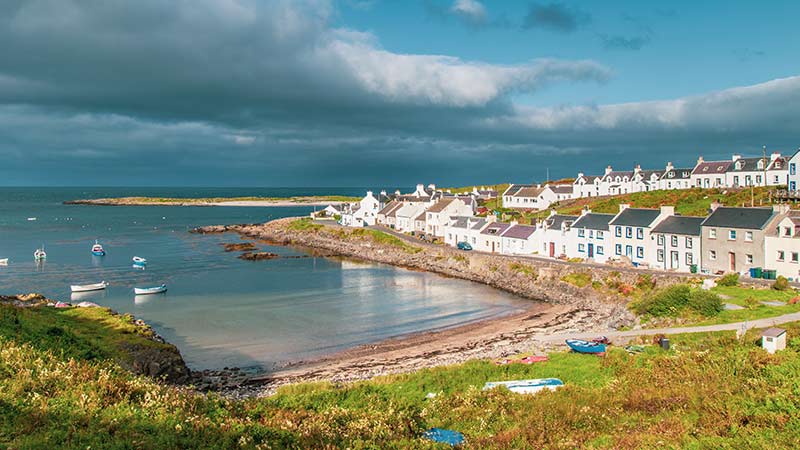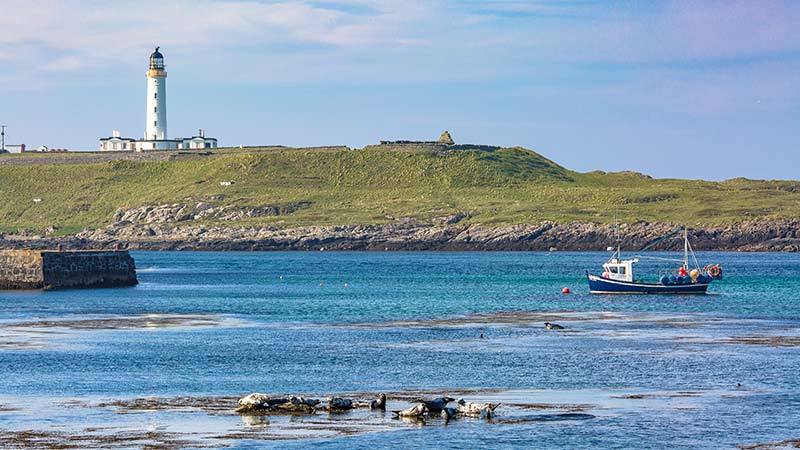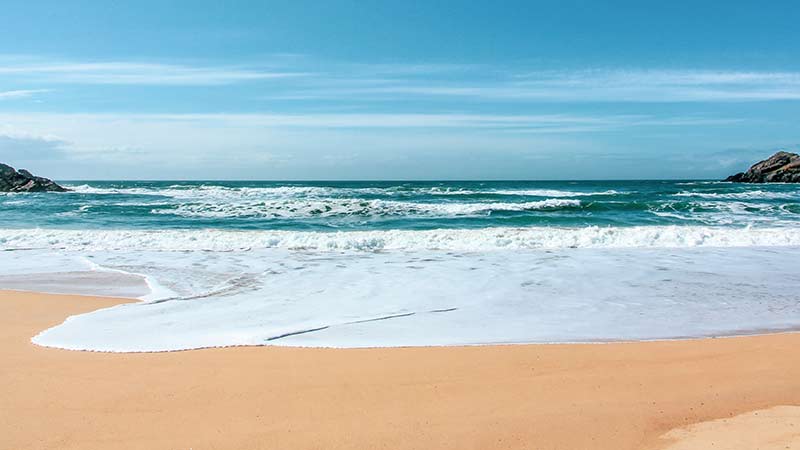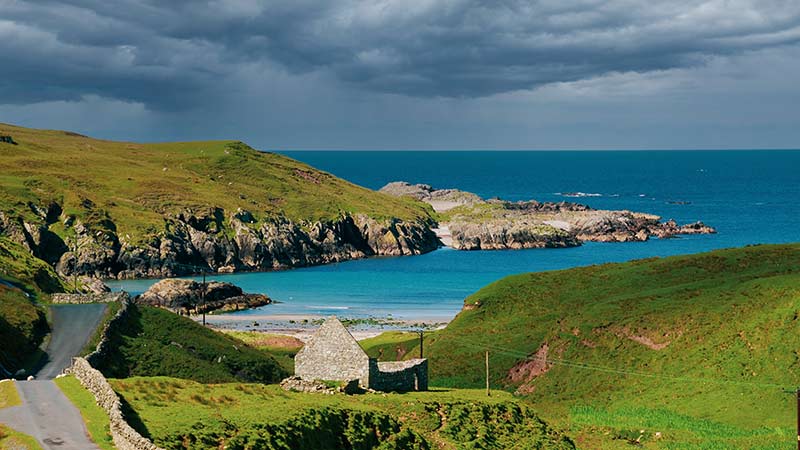The terraced houses of the small village of Portnahaven are built around a beautiful bay. At the top of the bay is Portnahaven Beach, you can’t really miss it. Portnahaven Beach is often used by the locals and their kids to relax and play. It’s also used as a launching site for the fireworks at Guy Fawkes night. Another beach nearby is The currie Sands, more to the west, at Claddach.

Portnahaven Beach
The slipway at the top of Portnahaven beach can be used to launch a small boat and it gives access to the beach. In the summer time these boats are moored in the bay, the same bay where many seals can be observed. Or are you observed by the seals? Who can tell. One thing is certain, they are curious and very easy to spot in this part of Islay, you won’t be disappointed. The beach is often sandy, sometimes shingle, and is backed by a rather wild grassy area.

Portnahaven beach is a good spot to observe and enjoy the quiet village life. The seals are often sunbathing on the rocks, the fishing boats usually moored a bit further on in the harbour. Pure bliss. Portnahaven is a very beautiful and picturesque village, perhaps one of the most picturesque in the west of Scotland. It’s ideal for a day trip or for a longer stay in the many self catering accommodations. The nearest hotel and bar is in Port Charlotte. The nearest pub round the corner at the end of the bay called An Tigh Seinnse.
Portnahaven Lighthouse
Eye catcher in Portnahaven is the Rhinns Lighthouse on the Isle of Orsay. And if you walk to Port Wemyss you can observe the lighthouse even better from the Path of the Fishermen, the coastal path along the rocky shore.

See and Do around Portnahaven
Besides the The Currie Sands Beach further west you can make very nice walks in the area or drive up the west road towards Lossit Bay, the Cultoon Stone Circle or Kilchiaran Bay. The west road ends in Port Charlotte. The entire coastline towards Claddach and east from Port Wemyss are perfect locations to go wave-watching during or after a big storm. It can be pretty wild out here, on the most south-western tip of the Rhinns of Islay.



